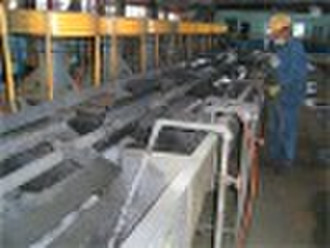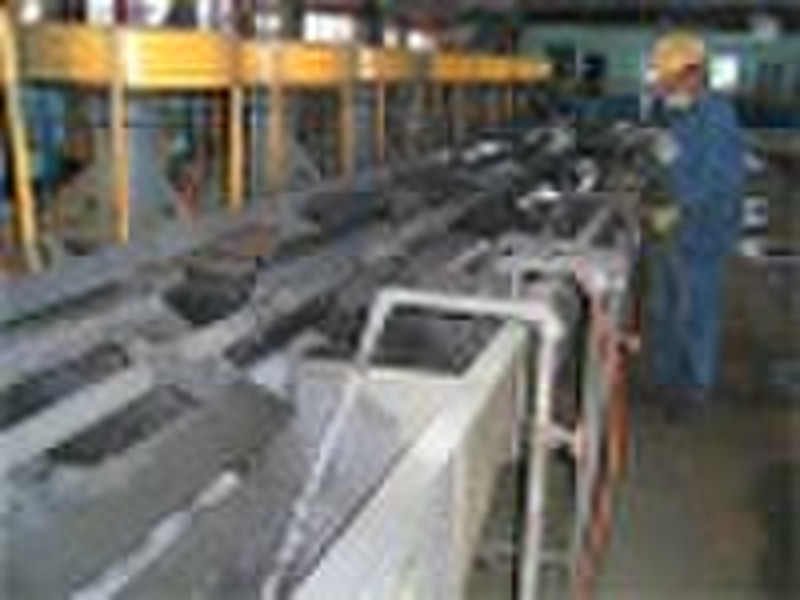ore concentrating equipment
原价: 10 000 USD
公义镇, 中国
生产能力:
100 单元 / 月

Ben Ma
联系人姓名
基本信息
| 条件 | 使用 |
|---|---|
| 出生地 | China (Mainland) |
| 牌子的名字 | HC |
Professional ore concentrating equipment manufacturer for gold, iron, hematite, magnetite,copper, lead&zinc, manganese ore... 1). The crude ore first proceed the preliminary broken through jaw crusher, generally divide into coarse crushing and fine crushing two stages; 2) the appropriate stone size(10-20 mm) will be get from the last process, then will be evenly feed into the ball mill through the elevator and mining feeder, the ball mill break and grind the ore into the fine ore; then feed into the spiral classifier, 3) due to the gravity differences of the solid particles, their deposition rate will be different too, using this theory, the spiral classifier will wash and classify the fine ore particles, 4) the washed and classified fine ore particles will be sent to the magnetic separator, making use of minerals susceptibility differences, magnetic separator will separate the magnetic minerals from the fine ore particles mixers by the magnetic force and mechanical force, and get 65% iron ore concentrate. Heavy medium beneficiation Usually we call the medium that greater than the density of water as heavy medium, so beneficiation in this medium called heavy medium beneficiation. In the medium, light mineral floats in the surface, heavy mineral subsidence, then heavy mineral (ore concentrate) and light mineral (gangue) can be collected separately, Heavy medium beneficiation can separate wide range of materials. This method the end step, first the ore should be crushed and grinded into fine particles, proceed a rough separation by the spiral chute, then collect the ore concentrate particles through the shaking table, and get the iron ore concentrate. It is widely applied to hematite (brown) iron ore, manganese ore, tungsten ore, tin, gold, precious metals such as tantalum and niobium ore mine. Flotation process, the method of flotation Use physical and chemical properties differences of mineral surface in the mineral particles sorting process, formerly known as method of flotation, which is the most widely used method of mineral processing. Almost all the ore can use the method of flotation, such as Gold, Silver Mine, galena, sphalerite, chalcopyrite, copper-fai, molybdenite, nickel sulfide minerals; such as pyrite, malachite, white lead, zinc Ling, hemimorphite and mine Hematite, cassiterite, wolframite, ilmenite, Beryl, spodumene, and rare earth minerals, uranium ore and other minerals of the sorting; Graphite, sulfur, diamonds, quartz, mica, feldspar and other non-metallic minerals and silicate minerals and fluorite, apatite, barite, and other non-metallic mineral salts and potassium salt, rock salt and other mineral salts. Another important purpose of the flotation is to reduce the fine coal ash from coal and to remove fine-grained pyrite. With flotation processing more symbiotic metal minerals, such as from copper, lead, zinc, and other metal ores separate copper, lead, zinc and pyrite, and other concentrate, and can reach a very high sorting indicators.
交货条款及包装
Packaging Detail: Standard and safe package. Delivery Detail: Within 30 days
端口: Qingdao/Shanghai
付款条款
Letter of credit
Telegraphic transfer
-
支付方式
我们接受:









